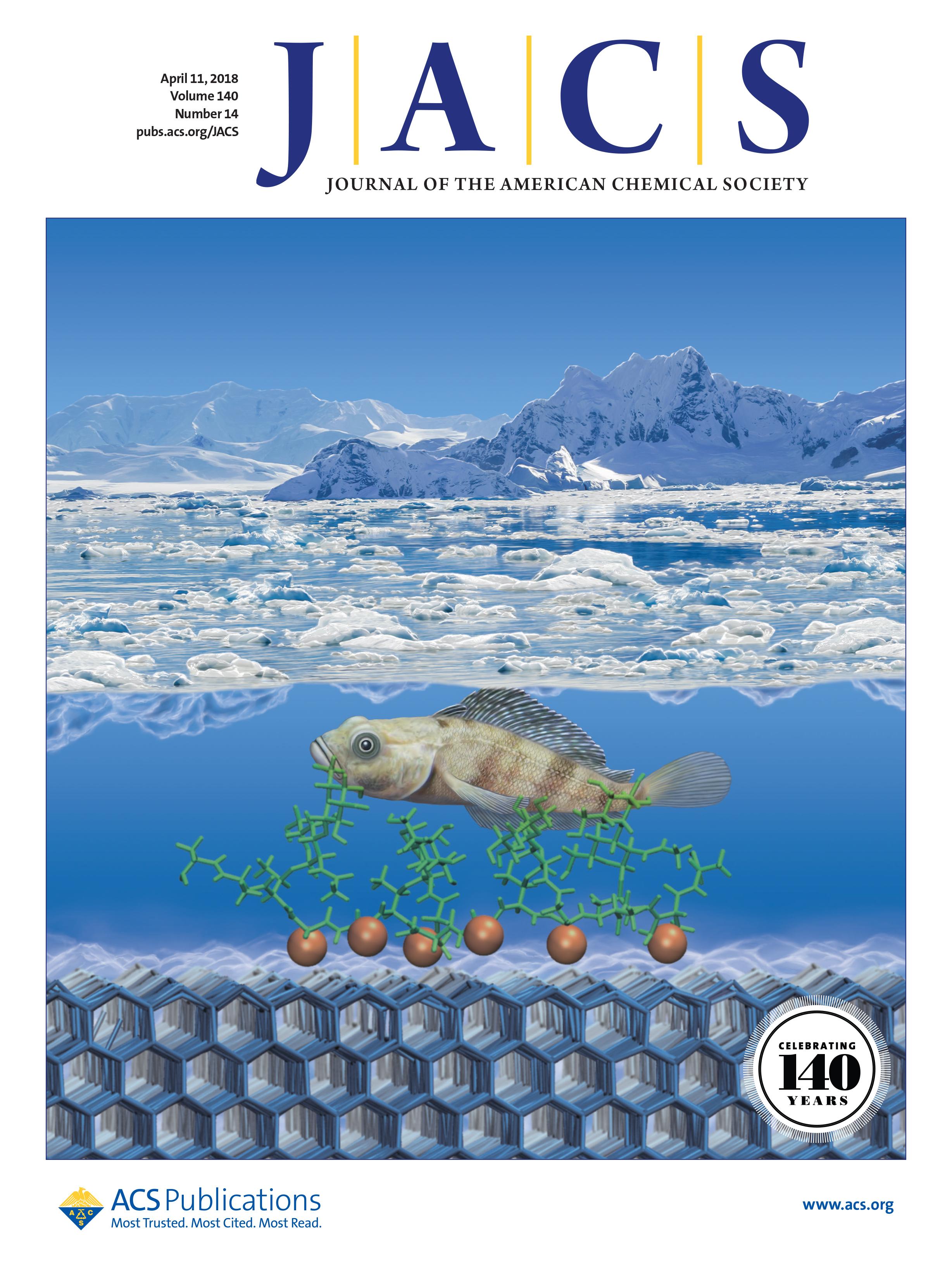
Featured on the cover of “Journal of the American Chemical Society”. (Copyright 2018, American Chemical Society)
Mochizuki focused on the AFGP8, the shortest one in AFGP family, to reveal its ice-binding manner. First, Mochizuki examined the structure of AFGP8 in solution, and he showed that AFGP8 preferentially adopts a specific conformation to segregate hydrophilic and hydrophobic groups. Then, Mochizuki found that the hydrophobic side of AFGP8 adsorbs to ice surface. Interestingly, the adsorption of AFGP8 to the flat surface of ice is not so strong and AFGP8 wanders on the ice surface until they selectively bind to the growth points of ice. This “walk” on ice is unique to AFGP and has not been reported for AFPs.
The findings of this research are not only important to fundamental science, but also expected in application areas, such as cryopreservation method of food or biological tissue.
This study has been published in Journal of the American Chemical Society.
Antifreeze glycoproteins bind reversible to ice via hydrophobic groups
DOI: 10.1021/jacs.7b13630
Publication Date (Web): February 2, 2018

